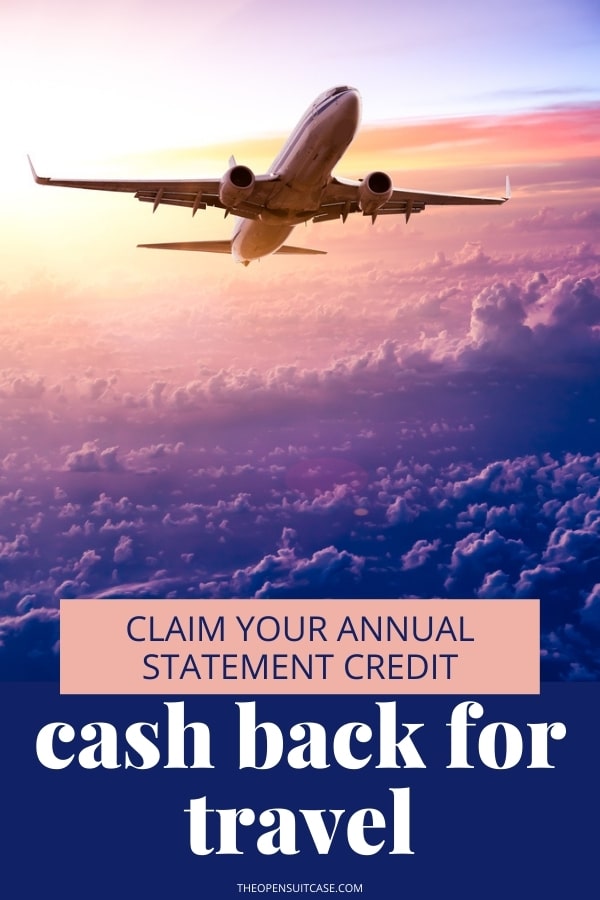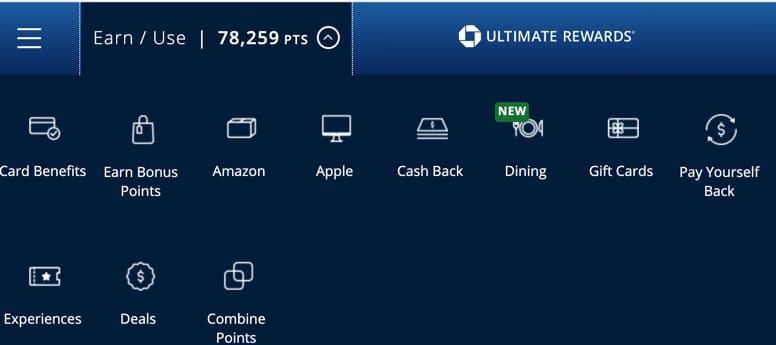Travel Statement Credits: How to Earn Them While Grounded
Have a credit card that offers an annual statement credit for travel purchases? The Chase Sapphire Reserve card, for example, offers a generous $300 credit. If you’re not traveling, do you lose that money?? Here’s everything you need to know about travel statement credits and how to claim them, even when you’re stuck at home.
I carry multiple cards with high annual fees including an American Express Platinum Business Card, a Chase Sapphire Reserve and a Marriott Bonvoy AmEx. The travel benefits associated with these cards are legendary. And I never gave much thought to the annual fee since each of these cards provides varying annual statement credits for travel related purchases. These credits offset the high annual fee.
But I didn’t travel in 2020.
Did I use my travel credit anyways?
You betcha.
But, for a minute or two, I was distinctly panicked.
So, how can you get reimbursed on your credit card for your annual travel benefit when you’re not traveling?
Read on.

What is a Travel Statement Credit?
One of the perks credit card issuers offer are statement credits. Cash back is probably the most widely known and used. If a credit card offers 5% cash back, it credits your monthly statement with 5% of your total purchases.
Several credit cards issue a statement credit for travel related purchases:
- Citi Prestige® Card
- U.S. Bank Altitude™ Reserve Visa Infinite® Card
- Chase Sapphire Reserve® Card
Depending on the card, you’ll receive a statement credit for eligible travel purchases made during the year. Purchases applied towards the credit do not earn points or miles.
Determine if You’re Eligible for a Travel Credit
Do you have a card that distributes an annual travel statement credit? To find out, log into your credit card account. Then, navigate to the benefits tab. If you’re eligible to receive an annual travel credit, the information should appear there, along with the amount of the credit.
I hold two Chase cards: the Sapphire Preferred and Sapphire Reserve. To find the benefit information for these cards, I needed to log into my account and navigate to the Ultimate Rewards section.
The card benefits don’t appear on the main account page, but are listed under each card’s information in the Ultimate Rewards tab.

What did I learn? The Sapphire Preferred does not offer a travel credit, but the Sapphire Reserve does.
How Much is Your Travel Statement Credit?
My Sapphire Reserve extends a $300 travel statement credit. This credit offsets the $450 annual membership fee, making it a tremendously valuable perk.
My American Express Platinum travel credit benefit is much less generous and has restrictions, compared to the Chase Sapphire Reserve. It’s a $200 credit for incurred airline fees, such as luggage charges and onboard purchases. Once a year, in January, cardholders need to select an airline from one of the 9 major domestic airlines. I fly JetBlue as often as possible so I ticked it, since free baggage is no longer a perk offered by my JetBlue card. Whether I’ll use this credit is still to be determined, since I almost never check a bag.
My Delta AmEx doesn’t offer a blanket travel statement credit. And my Marriott Bonvoy card offers a $300 statement credit for Marriott resort purchases made during the year.
What Purchases are Eligible for the Credit?
I returned to my Chase Sapphire Reserve card to see what types of purchases are deemed eligible for the statement credit. Detailed information is found in the teeny tiny fine print under Terms and Conditions.
Baffled by fine print? I cut and paste blocks of tiny legalese into a new document, increase the font size and break up the paragraphs to crack the code.
Eligible purchases are ones categorized as “Travel.” There are exclusions (fees, lottery or betting transactions, for example). To see what was included in the travel category, I downloaded a year’s worth of purchases.
I was surprised to find that my regular EZ Pass toll charges are categorized as Travel and totaled $530.
Of course I spent way more on other traditional travel purchases such as airline tickets, hotel stays and car rentals, all categorized under Travel and eligible for the credit.
When Does Your Annual Credit Period Begin and End?
So, I’d made enough eligible travel purchases, but did I receive the annual statment credit?
To make sure I received the credit, I returned to my year’s worth of activity and found travel statement credit adjustments totaling $505.
Wait a minute.
I thought I was entitled to $300.
I went back to the Terms and Conditions to see when my annual year resets. The Chase Sapphire Reserve uses your account opening date as your anniversary date.
When’s that?
Check your account activity for the billing of your annual membership fee. Buried in the fine print for my card is a note about accounts opened prior to May 2017. Although my annual membership fee is charged in February, my travel credit resets in December.
So….I had to go back another month and found another $95 credit. I finished one year’s worth of credits from December to March and then finished another year’s worth the following December.
How to Claim the Credit When You’re Not Traveling
As I mentioned, my commuting expenses counted as travel. I was surprised to see that a gift certificate my hubby purchased for me for spa services was categorized as travel. The spa is located within a hotel.
When you’re not traveling, you might need to get creative to use the credit, especially if you’re coming up on your anniversary date. But you can do it!
Try dining in a hotel restaurant. Or, see if your card’s offering a promotion. For example, Chase is extending travel credit eligibility to groceries and restaurant purchases during the Covid pandemic.
The one thing you don’t want to do is to leave money on the table.
